ALEISTER CROWLEY'S "THE VISION AND THE VOICE": AN INTRODUCTION
The Spiritual Quest That Shaped Thelema’s Most Profound Mysteries
Aleister Crowley’s The Vision and the Voice (technically titled Liber XXX Aerum vel Saeculi sub figura CCCCXVIII) is a seminal work in the Thelemic canon, and in my personal opinion second only to Liber AL vel Legis in importance.
It chronicles a series of 30 visionary experiences (“visions” or “cries”) that Crowley received while exploring the mystical realms known as the Enochian Aethyrs. These visions were obtained in two distinct periods of Crowley’s life – first in 1900 during travels in Mexico, and later in 1909 during a magical retreat in the Algerian desert with his protégé Victor Neuburg.
The Vision and the Voice is both a travelogue of inner planes and a foundational text of Thelema. In it, Crowley encounters angels and demons, records profound mystical revelations, and expands on key Thelemic doctrines, especially those concerning the goddess Babalon, the nature of the Abyss, and the attainment of the grade called Magister Templi, or Master of the Temple.
This article is born of a promise I made long ago to my friend Dr Justin Sledge (of ESOTERICA YouTube Channel fame) that I would provide some simple introductions to both this text and the Holy Books of Thelema as a whole (coming soon). It will provide historical context, explain the structure and method of these visions, and explore their symbolism, with special emphasis on the figure of Babalon and her significance in Thelemic cosmology.
Historical Context: Crowley’s Journeys in 1900 and 1909
To understand The Vision and the Voice, it is helpful to know what Aleister Crowley was doing around the times he received these visions. In 1900, the young Crowley, then in his mid-twenties, had recently been involved with the Hermetic Order of the Golden Dawn and was hungry for deeper spiritual knowledge.
Disillusioned by schisms in the Golden Dawn, Crowley left London and travelled extensively to absorb the “mystic traditions and methods of attainment of every race and clime”. One stop on this quest was Mexico. While in Mexico City in November 1900, Crowley performed his first experiments with the Enochian magical system he had learned (some would say spuriously, as he was never formally inducted in the Second Order via proper means) from the Golden Dawn. On November 14 and 17, 1900, he “investigated” the first two Aethyrs (the 30th and 29th, respectively). The visions he obtained were “mysterious and terrific in character,” unlike anything he had experienced before, and what he heard was largely unintelligible to him at the time.
Crowley was encouraged by these results, sensing their importance, but found himself unable to proceed to the 28th Aethyr. In his later analysis, he concluded that his spiritual grade at the time simply wasn’t high enough to go further – “his Grade did not entitle him to go further than the 29th”, as he put it.
In the mystical hierarchy of Crowley’s system, only an adept who had attained the grade of Master of the Temple (8°=3□) could penetrate into the higher Aethyrs beyond a certain point. Thus, Crowley laid aside the Enochian visions for nearly nine years.
By 1909, Crowley had dramatically evolved in his occult career. In the intervening years he had traveled through Asia (studying Yoga and Buddhism), received Liber AL vel Legis (The Book of the Law) in 1904 in Cairo (heralding the new Aeon of Horus in Thelema), and founded a new magical order called the A∴A∴ in 1907, where he and his students pursued rigorous spiritual training. Crowley had also collected a series of inspired Holy Books of Thelema during 1907–08. By late 1909, having published some of this material in his journal The Equinox, Crowley embarked on a walking tour of Algeria with Victor Neuburg, a poet and disciple. It was during a desert hike near Bou-Saada that Crowley felt a sudden and overwhelming inner command to resume the Enochian visions.
As he later described it:
“…at Aumale a Hand suddenly smote its lightning into his heart, and he knew that now, that very day, he must take up The Vision and the Voice from the point where he had laid it down in 1900.”
Crowley was apparently well-prepared (very convenient indeed!), as he had with him a cherished notebook containing the nineteen Enochian Calls or Keys originally received by Dr. John Dee and Sir Edward Kelley in the 16th century. Thus equipped, Crowley and Neuburg began in November 1909 to invoke the Aethyrs once more, picking up exactly where Crowley had left off years before.
The Algerian Desert Workings
Crowley’s 1909 working of the Aethyrs reads like an exotic adventure, but one taking place as much in the mind as in the sands of the Sahara. Neuburg acted as scribe and magical assistant throughout. The two trekked through desert towns and oases, starting around Aumale in northern Algeria, then southward to Bou Saada and later to Biskra, and performing a ritual invocation of a new Aethyr almost every day.
Crowley would choose a quiet spot in the desert, often at dusk or dawn when conditions were still, and enter into a trance to “scry” (i.e. clairvoyantly explore) the unseen world of the Aethyr. By November 23, 1909, he successfully invoked the 28th Aethyr, confirming that its visionary content matched the style and symbolism of the earlier two Aethyrs he’d recorded in Mexico. Encouraged, the duo pressed onward. They reached Bou Saada on November 30th; by that time Crowley had “obtained” (experienced) the vision of the 20th Aethyr. After a brief rest, they ventured deeper into the desert. On December 8th, they set out for Biskra, arriving there on December 16th and completing the final visions (down to the 1st Aethyr) by December 19, 1909. In total, Crowley and Neuburg experienced all 30 Aethyrs, from the lowest (30th) to the highest (1st), during this trek: a truly monumental feat of sustained mystical concentration.
The physical hardships of desert travel – long walks, sparse food and water, cold nights under the stars – no doubt contributed to the intensity of the visions. Crowley also employed various magical techniques to augment his visionary state. These included ritual invocations (using the Enochian Keys), prolonged meditative trance, and undoubtedly sex magick and drug use, as Crowley was experienced with using techniques of exhaustion and substances like hashish in other workings. Neuburg, who was both a student and at times, Crowley’s lover, participated through devotional dance and by maintaining the protective ritual circle when needed. The result was a powerful alchemy of body and soul: Crowley described the 1909 visions as coming “in a perfectly sane and scientific manner”, yet revealing utterly uncharted territories of consciousness. By the end of the working, Crowley believed he had attained a new level of enlightenment, crossing the great Abyss of occult metaphysics (more on that later) and achieving the rank of Master of the Temple in his order. The Vision and the Voice would soon be written up and published (in The Equinox in 1911) so that others could study these extraordinary experiences.
Enochian Magic and the Thirty Aethyrs
The Vision and the Voice is rooted in the Enochian magical system originally developed by the Elizabethan magus Dr. John Dee and his scryer Edward Kelley. A brief overview of Enochian magic will help set the stage.
In the 1580s, Dee and Kelley claimed to receive communications from angelic beings, who delivered to them a complex occult system including a unique “angelic” language (later called Enochian), magical tablets, and a series of incantations or Calls designed to access various spiritual realms. Among these revealed mysteries were the Thirty Aethyrs (or Aires) – conceived as a set of concentric regions of the astral universe, somewhat like ascending planes of existence. The 30th Aethyr (named TEX) is the lowest and closest to the material world, and they rise in power and purity up to the 1st Aethyr (named LIL), the highest divine light. To each Aethyr corresponds an Enochian Key or Call that opens the “door” to that realm. Crowley was deeply fascinated by Dee’s system (the Golden Dawn had incorporated a heavily simplified version of the Enochian system into its teachings, and Crowley had learned its basics towards the end of his time in that Order).
Equipped with Dee and Kelley’s nineteen Enochian Calls (the original invocations in the Enochian tongue), Crowley set out to systematically explore all 30 Aethyrs by visionary experience. The method he used was known as “skrying in the spirit vision,” essentially a form of astral clairvoyance. In practical terms, Crowley would enter a light trance, recite the appropriate Enochian Call (often the 19th Key, which could be adapted to any Aethyr) and then pass into an inner vision of the Aethyr’s landscape and entities. He carried a golden topaz crystal set in a cross-shaped wooden mount as a scrying medium – “not unlike the looking glass in the case of Alice,” he quipped. Staring into this stone, he would let visions arise before his mind’s eye. As images and voices manifested, Crowley dictated aloud everything he saw and heard, often speaking as the entities in the vision or describing scenes in real time. Neuburg, as the scribe, diligently wrote down Crowley’s words and also noted his physical reactions (at times Crowley would fall into deep trance silence for many minutes, or speak with different intonations).
Each Aethyr thus yielded a chapter of the Vision and the Voice – literally the “vision” perceived and the “voice” that spoke. The text Crowley compiled consists of thirty visionary records, one per Aethyr (numbered 30 down to 1). In Crowley’s publication, each vision is titled The Cry of the [nth] Aethyr. The content of these cries is highly symbolic and often written in a first-person prophetic style. Crowley later appended commentaries to elucidate some of the Qabalistic and occult references. Notably, Crowley found that as he ascended the Aethyrs, the visions became progressively more intense, coherent, and “sublime”. The lower Aethyrs presented scenes and allegories that, while mysterious, still related to experiences within Crowley’s comprehension at that time. But as he pushed into the higher Aethyrs, especially those above the 14th, the revelations touched on exalted cosmic truths and personal spiritual ordeals that tested the limits of his understanding. Crowley remarked that the series showed “a continuous advance towards coherence” as it went higher, and that the symbolism increasingly fit with the “mystic laws of nature and transcendental truth” that had been foreshadowed in The Book of the Law and his earlier mystical trances.
In other words, the Aethyrs seemed to confirm and elaborate upon the theological and philosophical framework of Thelema. Indeed, Crowley saw the Enochian visions as a kind of grand synthesis of many spiritual traditions: “They brought all systems of Magical doctrine into harmonious relation,” he wrote, noting that one can find within the visions references to “Asiatic cults, the Qabalah (Jewish and Greek), Gnostic arcana, the Pagan pantheon from Mithras to Mars, the Mysteries of Egypt and Eleusis, the Norse sagas, Druidic rituals, Mexican and Polynesian traditions, the mysticism of Molinos and of Islam” – all unified in a single tapestry. Such is the sweeping scope of The Vision and the Voice.
Structure and Key Themes of The Vision and the Voice
Structurally, The Vision and the Voice is organised as a climb through the 30 Aethyrs, as we already discussed. The journey begins with the 30th Aethyr (TEX), which Crowley entered in Mexico in 1900, and ends with the 1st Aethyr (LIL), attained in Algeria in 1909. One can think of it as a ladder of consciousness: each step (Aethyr) transcends the previous one.
The tone and content of the visions vary as this ascent progresses, but certain overarching themes emerge:
Initiation and Spiritual Testing
Many Aethyrs present the seer (Crowley) with trials or elaborate allegories of initiation. For example, in one early vision, Crowley is confronted by symbolic guardians that challenge his understanding. As the visions progress, the tests become more daunting, culminating in the ordeal of the 10th Aethyr, where the very fabric of the seer’s ego is challenged by the demon Choronzon (a personification of dispersion and chaos, discussed later).
Revelation of Thelemic Cosmology
The visions gradually unveil the cosmology of Crowley’s religion, Thelema. They introduce or develop figures and concepts that are central to Thelema: the goddess Babalon (and her earthly aspect, the Scarlet Woman), her consort Chaos (often identified with the primordial male creative principle or All-Father), the idea of the Beast 666 (Crowley’s own magical persona, the complement to Babalon), the concept of the Abyss and the City of the Pyramids beyond it, the state of Naught (Night of Pan), and the advent of the Crowned and Conquering Child (symbolic of the Aeon of Horus). All these appear in one form or another across the Aethyrs. The highest visions explicitly reference Thelema’s doctrinal elements: for instance, the very last Aethyr (LIL) gives a vision of “the Crowned and Conquering Child, the Lord of the Aeon” , essentially a manifestation of Ra-Hoor-Khuit, confirming Crowley’s 1904 revelation of the New Aeon
Mystical Union and the Divine Feminine
A recurring theme, especially in the upper Aethyrs, is the mystic striving for union with the divine, often represented in visionary form as a sexual or sacramental union with the feminine divine figure, Babalon. Crowley’s visions become explicitly ecstatic and poetic when describing this union. For example, in a high Aethyr he hears a rapturous angelic song: “I am the harlot that shaketh Death... Immortality jetteth from my skull, and music from my vulva... my Whoredom is a sweet scent… played unto God the Invisible”. Such graphic spiritual poetry, shocking as it might appear, is symbolic – it exalts divine sexuality and sacred ecstasy as the key to immortality. Crowley, as the seer, is often an active participant in these visions. In one of the loftiest Aethyrs, he is depicted as mystically marrying Babalon, surrendering himself completely to the divine feminine in order to be reborn as a Master of the Temple.
The Abyss and Ego-Death
Perhaps the most pivotal concept unveiled in The Vision and the Voice is the nature of the Abyss, the great gulf or discontinuity on the Qabalistic Tree of Life that separates the worldly consciousness from the truly enlightened consciousness. In Thelemic metaphysics, the Abyss is the chasm one must cross to move from the grade of Adeptus Exemptus to Master of the Temple.
The visions vividly dramatise the Abyss. In the 11th Aethyr, Crowley is forewarned of the coming challenge; in the notorious 10th Aethyr (ZAX), he confronts Choronzon, called “the Demon of the Abyss”. This confrontation, which Crowley undertook by performing a full ritual evocation of Choronzon in a protective circle and triangle drawn in the desert sand, is one of the most famous episodes in the book. Choronzon manifests as pure chaos and falsehood, taking on shifting shapes and hurling distractions. At one point Choronzon speaks in Crowley’s vision with nihilistic fury: “I am I. I have shut myself up… and none shall touch me… From me come leprosy and pox and plague and cancer and cholera…” – a horrifying rant that personifies the ego’s isolation and all the ills that stem from it. Crowley’s task was to withstand Choronzon’s onslaught without giving in to fear or temptation. With Neuburg’s help (who stood ready to threaten the demon back into the triangle with a dagger whenever it tried to break loose), Crowley succeeded in containing Choronzon. The demon eventually dissolved into incoherent gibberish and dust, signalling that the illusion of separateness had been overcome.
In Thelemic terms, Crowley “crossed the Abyss” at that moment – a process that entails the utter destruction of the personal ego in the “blood-storm of Choronzon,” leaving behind only a purified consciousness capable of residing in the City of the Pyramids, the spiritual city of enlightened Masters, symbolically located in Binah.
These themes interweave through the narrative of the Vision and the Voice, making it a complex, multi-layered text. While each Aethyr’s vision is unique, ranging from apocalyptic landscapes to throne-room proclamations by angelic beings to abstract metaphysical lectures, they collectively map Crowley’s initiatory journey. The tone of the work shifts from the initial uncertainty and awe of the early visions, through fear and trial of the Abyss, into rapturous exaltation and enlightenment in the higher Aethyrs. By the final visions, the language soars into mystical poetry and paradox, as Crowley struggles to articulate experiences essentially beyond human language. It is this combination of a dramatic mystical quest with profound doctrinal content that gives The Vision and the Voice its enduring fascination.
Babalon: The Scarlet Woman and the Great Mother
Among all the figures and symbols that appear in The Vision and the Voice, none is more prominent or important than Babalon, the mysterious goddess who is both the Great Mother and the “Scarlet Woman” of Thelemic lore. Babalon makes her presence felt in multiple Aethyrs, progressively revealing her nature to Crowley. Her name (notably spelled B-A-B-A-L-O-N, not “Babylon”) was itself a revealed secret.
The figure of Babalon draws upon the biblical image of the Whore of Babylon from the Book of Revelation. Still, Crowley’s visionary experience transforms this figure from a symbol of abomination into a sacred archetype of liberated divinity.
In Thelema, Babalon is a complex figure, and one that I personally have a hard time reducing to a “goddess” as she represents a lot more than “simply” a deity. I called her a vector of transcendence in my first book. She is called the “Mother of Abominations” yet also regarded as a positive, even exalted figure – the embodiment of the liberated female sexual power (the most “popular” reading, and possibly the most simplified) and the divine womb of all being. In Liber XV: Gnostic Mass (Crowley’s central ritual of Ordo Templi Orientis, written a few years after the visions), Babalon is identified with Mother Earth, “the mother of us all,” and is praised in the creed as the womb in whom all men are begotten and where they shall rest.
Abstractly, she represents the ideal of total receptivity and inclusion – a womb or cup that receives all. This potent symbolism was vividly communicated to Crowley in the Aethyrs.
Crowley’s visions of Babalon occur especially in the higher Aethyrs. In one critical vision, he beholds Babalon riding astride the Beast as a scarlet woman seated upon a many-headed beast, holding aloft a golden cup filled with the blood of the saints. This is a direct echo of St. John’s Apocalypse, but Crowley perceives it with a new understanding. The cup in Babalon’s hand is the Holy Grail, “aflame with love and death”, in which are mingled the elements of the sacrament of the new Aeon.
Crowley realised that Babalon’s cup is the Cup of universal dissolution – to attain the divine, one must pour one’s own blood (ego, identity, all one holds dear) into that cup. This is the “Secret of the Holy Graal” that Crowley later articulated in his short scripture Liber Cheth vel Vallum Abiegni (sub figura 156, the Qabalisic number of Babalon).
In that text, received in 1909 during the same period as the visions, it is written: “This is the secret of the Holy Graal, that is the sacred vessel of our Lady the Scarlet Woman, Babalon the Mother of Abominations, the bride of Chaos, that rideth upon our Lord the Beast.” The adept is instructed: “Thou shalt drain out thy blood that is thy life into the golden cup of her fornication”, yielding every last drop of the self to Babalon. In return, the adept’s blood (representing the finite self) is mingled in Babalon’s cup with the universal life, and the adept’s consciousness is carried up by angels “to the City of the Pyramids” beyond the Abyss, where “the name thereof shall be no more” – meaning the separate self is annihilated in Babalon’s womb and one is reborn as a Star in her body - one of the most telltale signs of Babalon’s earlier manifestation in Thelemic scripture as Nuit herself, the first voice of Liber AL vel Legis nonetheless.
In the visions, Crowley experiences Babalon as both terrifying and beatific. She is often called the “Virgin Whore”: virgin in the sense of pure and untouched in herself, yet whore in the sense that she denies no one and embraces all experience. Crowley understood Babalon as divine femininity unbound – sexuality sacralised, and spirituality made tangible and passionate. Where previous aeons (e.g. the Patriarchal Aeon of Osiris, represented by slave-religions such as Hebraism, Christianity, and Islam) had cast the sexual woman as a villain or tempter, Thelema (the Aeon of Horus) exalts her as a direct path to God.
Babalon is God-as-Woman, not a chaste, distant mother but a present, intoxicating force of nature who demands total surrender, which implies relinquishing that very control over the Universe the adept worked so hard to achieve.
Small wonder that Crowley, whose own mystical quest required confronting his sexual and emotional taboos, saw union with Babalon as the climactic attainment.
Practically, Babalon’s appearances in the visions often involve Crowley being symbolically tempted or invited to relinquish all. In the 12th Aethyr, he witnesses the archetype of the Graal and the Rose – symbols of Babalon – and the “birth of the universe” from her heart. By the 2nd Aethyr, the process reaches its fulfilment: this Aethyr is explicitly titled “The Marriage of the Seer with Babalon”. Here, Crowley experiences an ecstatic union, losing himself in the goddess. The imagery turns toward the transcendental: the Night of Pan (total dissolution in the All) and the emergence of the Crowned Child (a new divine consciousness) follow this union. In effect, Crowley’s visionary marriage to Babalon in the 2nd Aethyr signifies that he has given the final oath of the Master of the Temple: to live “for the sole purpose of transmitting the word of His Superior”, having no personal will apart from the divine; in Thelemic symbolism, the Master of the Temple’s superior is Babalon herself, as she receives the Master’s blood into her Graal and births the Master as a Babe of the Abyss.
It is important to note that Babalon is not merely an abstract concept in these visions – she is also linked to Crowley’s real-life experiences. The Scarlet Woman is the term Crowley used for particular women in his life who acted as magical partners and embodiments of Babalon’s force. The concept was first mentioned in Liber AL vel LEgis, which proclaimed: “the Beast; and in his woman called the Scarlet Woman is all power given. They shall gather my children into their fold”. Crowley took this as meaning that just as he was to represent the Beast 666 (the male energy of the New Aeon), there would be a Scarlet Woman to complement him and help channel the new Aeon’s energies.
Indeed, Crowley identified several Scarlet Women over the years (his wife Rose Edith Kelly initially, later devotees such as Leah Hirsig, and others). In The Vision and the Voice, the Scarlet Woman archetype is exalted to its divine form as Babalon. Crowley’s personal relationships thus had a mythic parallel in his visions: the earthly Scarlet Woman was like an avatar, while Babalon was the force overseeing the initiate’s journey.
In the 8th Aethyr and above, Babalon’s consort Chaos is also mentioned. Chaos is described as the “All-Father”, the masculine divine principle corresponding to her feminine principle. In the Gnostic Mass liturgy Crowley later wrote, Chaos is called “the Father of Life”, and together Babalon and Chaos are an emanation of the creative Union of opposites. In simpler terms, Babalon (female) and Chaos (male) represent the fundamental cosmic pair and gnostic syzygy, much like Shakti and Shiva in Eastern mysticism. Crowley, identifying himself as To Mega Therion (the Great Beast 666), viewed Chaos as closely related to the Beast and thus to himself, while Babalon was the complement he aspired to fully unite with.
The revelations of Babalon in The Vision and the Voice had a profound impact on Crowley’s system. They provided a theological and ritual framework for honouring the divine feminine. Decades later, the influence of Babalon inspired Crowley’s students as well, most famously Jack Parsons, in 1946, who attempted the “Babalon Working” to invoke Babalon on Earth. Parsons believed he received a new scripture called Liber 49 (The Book of Babalon) as a communication from the goddess, seeing it as a kind of “fourth chapter” to Crowley’s Book of the Law.
DEMYSTIFYING THE BABALON WORKING
Jack Parsons, a pioneering figure in both rocketry and the occult, is often remembered for his involvement in a controversial series of rituals known as The Babalon Working. Alongside the more infamous L. Ron Hubbard, Parsons sought to explore the boundaries of spirituality and science through these complex ceremonial practices.
Such developments attest that the seed planted in The Vision and the Voice continued to grow within the Thelemic tradition.
The Mysteries of the Abyss
Hand in hand with the Babalon revelations comes the book’s intensive exploration of the Abyss – that great spiritual gulf that must be crossed on the path to supreme enlightenment. In Crowley’s metaphysical schema (drawn from the Qabalistic Tree of Life), the Abyss lies between the human realm of individual consciousness and the divine realm of true unity. To cross the Abyss is to undergo the obliteration of the ego and to transit from the grade of Adeptus Exemptus (a very advanced adept who has mastered all worldly knowledge and power) to the grade of Magister Templi (Master of the Temple), one who dwells in the supernal consciousness of Binah. The Vision and the Voice gives a kind of dramatic “insider’s account” of what crossing the Abyss entails.
Leading up to the Abyss, the visions of the 13th, 12th, and 11th Aethyrs present teachings about the nature of reality, illusion, and the forthcoming ordeal. By the time Crowley reaches the 11th Aethyr (IKH), he is at the very brink of the Abyss. Here, he is greeted with abstract visions that seem fragmented, reflecting the chaotic nature of the Abyss. He is told that ahead, in the 10th Aethyr, he must face the utter unknown. Sure enough, upon invoking the 10th Aethyr (ZAX), Crowley finds himself confronted by Choronzon, described as “the mighty devil” of that Aethyr.
In the actual 1909 working, Crowley took the unusual step of performing an elaborate evocation ritual for Choronzon, moving away from the tried and tested invocation and scrying method and instead relying on the trappings of Solomonic magic (to a degree, at least), and treating the encounter not just as a vision but as a magical battle.
He and Neuburg drew a protective magic circle in the desert sand, with a triangle outside it into which Choronzon would be constrained. Crowley (the seer) entered the triangle – effectively entering the lair of Choronzon – while Neuburg stood guard in the circle, armed with a dagger and strict instructions (backed by an oath) to challenge any apparition, even if it seemed to be Crowley, that tried to breach the circle. This ritual setup symbolised the idea that Choronzon would attempt every trick to “break out” (i.e. to disrupt the concentration or to tempt the adept back to ego), and that unwavering resolve was needed to keep him at bay.
What transpired is dramatically recorded in the Cry of the 10th Aethyr. Choronzon speaks in multiple voices, at times proclaiming himself the Master of Form (claiming to be the source of all perceptions), and at times devolving into bestial howls and obscene taunts. The demon tries to deceive Neuburg by imitating Crowley’s voice pleading for help, and also tries to lure Crowley’s mind with tantalising images. Each time, Neuburg stands firm and banishes the intrusion. Finally, Choronzon’s coherence disintegrates – the record shows him sputtering nonsense syllables and animalistic noises, until nothing remains but silence and perhaps a swirl of desert sand. Crowley had successfully endured the dispersion force of Choronzon.
Symbolically, this means Crowley’s ego was shattered and emptied out. In The Vision and the Voice, once Choronzon is overcome, the 10th Aethyr transforms into a scene of deep significance: the City of the Pyramids is revealed across the Abyss, and the seer perceives the entry into that City.
The City of the Pyramids represents the abode of those Masters of the Temple who have given up their names (ego-selves and identities) and exist as silent, incorruptible “pyramids” in the vast Night of Pan (Pan here meaning the All and also the god of dissolution). In Liber Cheth, this moment is described thus: “the angels shall lay thy dust in the City of the Pyramids, and the name thereof shall be no more”.
Crowley indeed adopted a new mystical name upon crossing – Nemo (Latin for “No-man” or “Nobody”), used to designate his status as one who had lost the ego. The Abyss was the great hurdle, and he had crossed it.
After the Abyss, the remaining visions (9th through 1st Aethyrs) take on a markedly exalted tone. They are essentially the visions of a Master of the Temple, reporting back from across the great divide. In these higher Aethyrs, Crowley experiences sublime communion with divine figures, receives oracles about the future of humanity, and even glimpses the possibility of a further Aeon to come. The 3rd Aethyr introduces the idea of “the Daughter” (Ma’at) who shall be exalted, suggesting that after the current Aeon of the Crowned Child (Horus), an Aeon of the Daughter (Ma’at) will manifest, balancing the equation. But Crowley’s main focus was on the current Aeon’s formula.
In the final two Aethyrs, the visions circle back to affirm Thelemic themes: the union of opposites (symbolised by Chaos and Babalon conjoined), and the proclamation of the Law of Thelema. The Crowned and Conquering Child seen in the 1st Aethyr is, in essence, Horus, Lord of the New Aeon, whom Crowley had first encountered in Cairo in 1904. The circle of Crowley’s journey thus completes itself: he sought to explore the unknown Aethyrs, and at the summit he found the very truths that had been declared at the founding of Thelema, now enriched with deeper understanding.
Legacy and Significance in Thelemic Literature
If The Book of the Law is the concise scripture announcing a new Aeon, The Vision and the Voice is the extensive mystical testimony that fleshes out the spiritual universe of that Aeon.
Many of Thelema’s most important mystical concepts find their vivid expression in these visions. For example, the doctrine of the Abyss – and the role of Choronzon as its guardian – is primarily drawn from Crowley’s experiences in the Aethyrs. Future aspirants in the A∴A∴ would look to this account for insight (and caution) about what the Abyss entails. The mystique of Babalon as the Holy Graal, and the path of the devotee as one of sacrifice and love under will, comes to life through this text. The concept of the Scarlet Woman as an office was validated and given cosmic context, which influenced how Crowley worked magically with partners thereafter.
Additionally, The Vision and the Voice has served as a rich field of study for occultists interested in Enochian magic. Crowley’s approach differed from the Golden Dawn’s more formal rituals; he demonstrated a more vision-driven, psychological exploration. Because he published the Enochian Keys and his vision transcripts, he opened up the Dee/Kelley system for others to experiment with in a mystical (not only ceremonial) way. In the years since, many occultists have retraced Crowley’s footsteps by scrying the Aethyrs themselves, often comparing notes with Liber 418 as a guide. Crowley’s own commentary, added in later publications, connects passages of the visions to corresponding symbols in tarot, Qabalah, and mythology, making the work a kind of encyclopedic visionary gloss on esoteric wisdom.
For the student of Thelema, The Vision and the Voice provides an experiential understanding of doctrines that might otherwise remain abstract. Reading the account of how Crowley faced Choronzon, one viscerally senses what it means to give up the ego; reading the poetic adoration of Babalon, one gains a felt sense of why Thelema sanctifies the passions rather than suppressing them. The text oscillates between the terrifying and the beatific, mirroring the initiatory path itself. Its language ranges from plain descriptions to high-flown prophetic utterances, challenging the reader to engage with it on multiple levels – intellectual, emotional, and intuitive.
In the broader sense, The Vision and the Voice stands as a remarkable document of mystical exploration. It is comparatively rare in occult literature to find a record that attempts to map a whole series of spiritual planes systematically. Crowley did so with a scientist’s rigour (repeating the method for each Aethyr, recording results meticulously) and an artist’s flair. The result is a visionary masterpiece that has earned its place in the Western esoteric tradition. Israel Regardie later wrote that, despite whatever criticism one might have of Crowley, Liber 418 proves Crowley’s genius as a mystic and seer. It is a text that invites contemplation and yields new insights with repeated study.
For someone new to Thelemic literature, The Vision and the Voice may appear dense or bewildering at first – the imagery is rich and the references are many. But with a bit of context (such as this article provides), the shape of its message becomes clear.
Crowley’s journey through the Aethyrs is ultimately the journey of self-transcendence. It is the story of a man who, driven by will and curiosity, sought the depths of his soul and the heights of spirit, and in so doing encountered the divine feminine (Babalon), faced the specter of his own annihilation (the Abyss), and emerged with a new understanding of himself and the universe (the Law of Thelema).
In short, The Vision and the Voice is Crowley’s mystical odyssey – a work that is as inspiring as it is challenging. Its influence resonates through Thelemic practice and writing to this day, ensuring that new generations will continue to hear the echoes of that Voice and see the glimmers of that Vision as they pursue their own Great Work.
STARS & SNAKES IS OUT NOW
I’m pleased to announce something new: the release of Stars & Snakes: A Thelemite’s Field Notes—a collected anthology of these very writings, gathered together in one volume under my own independent Chnoubis Imprint.





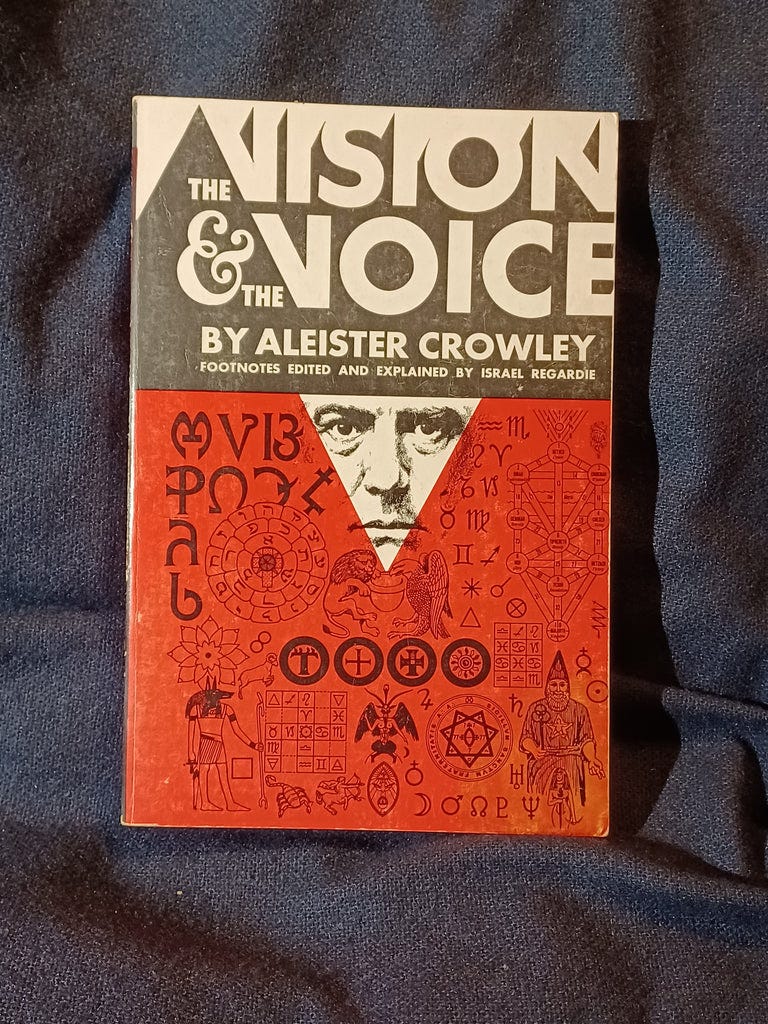
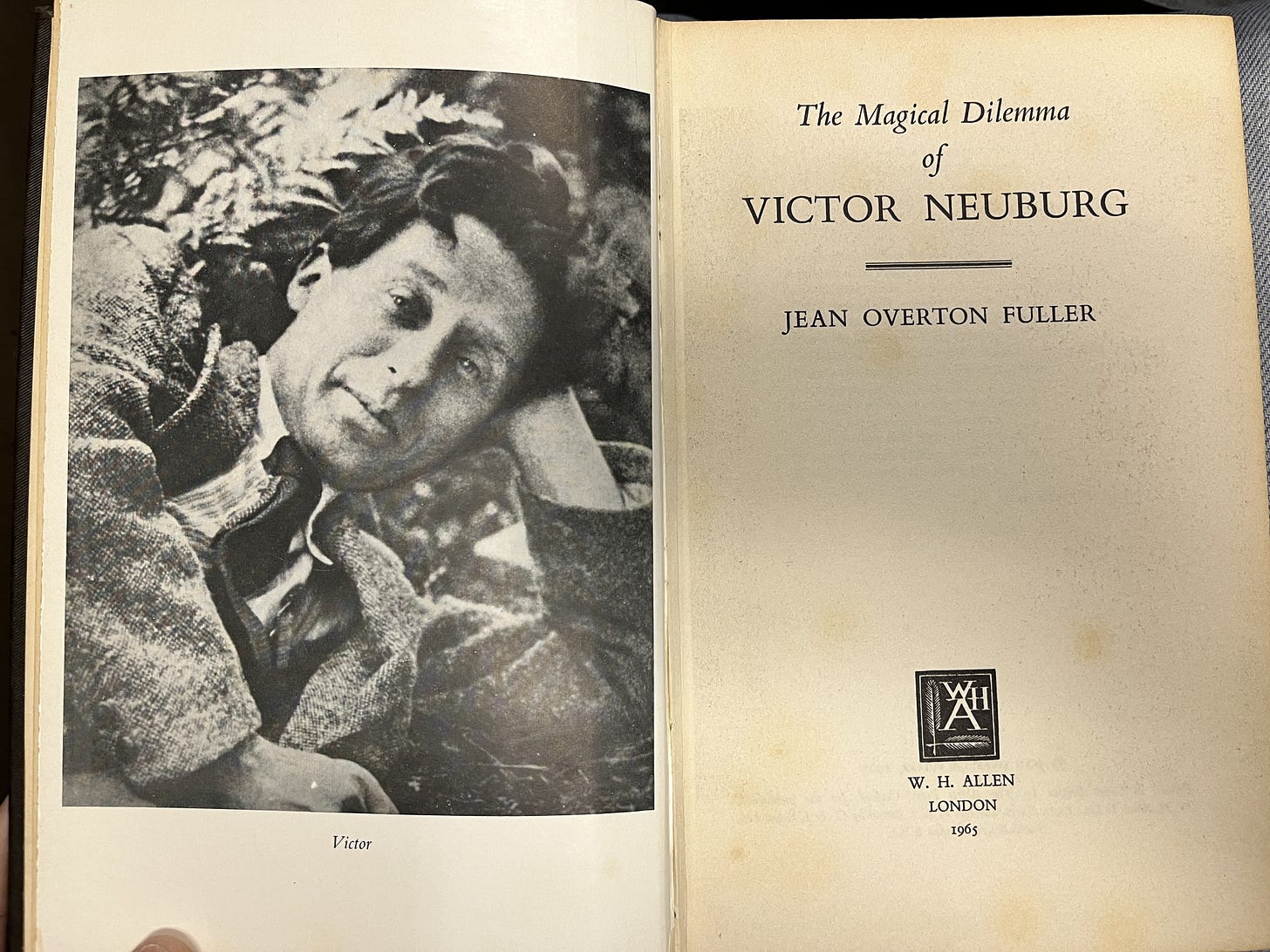
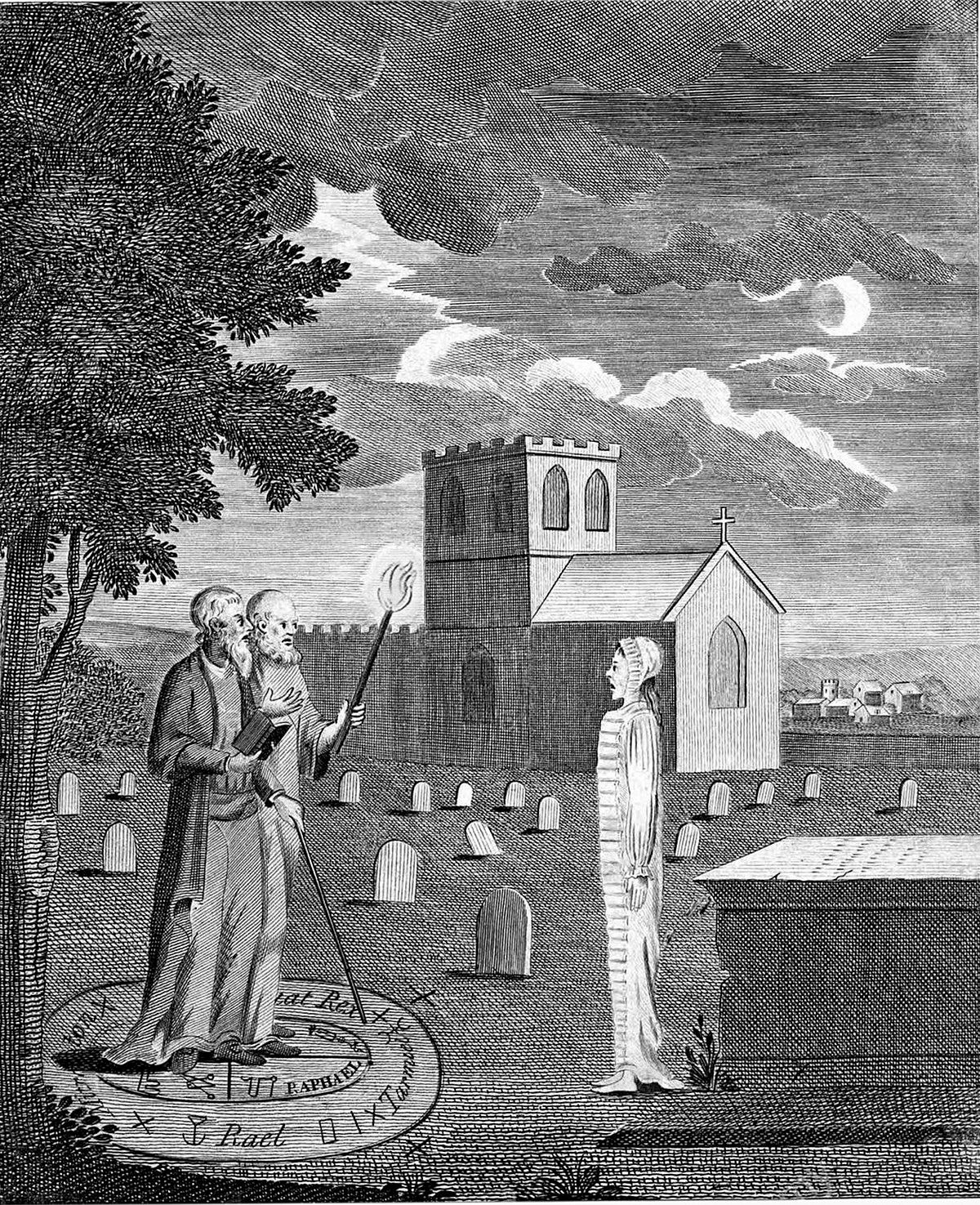
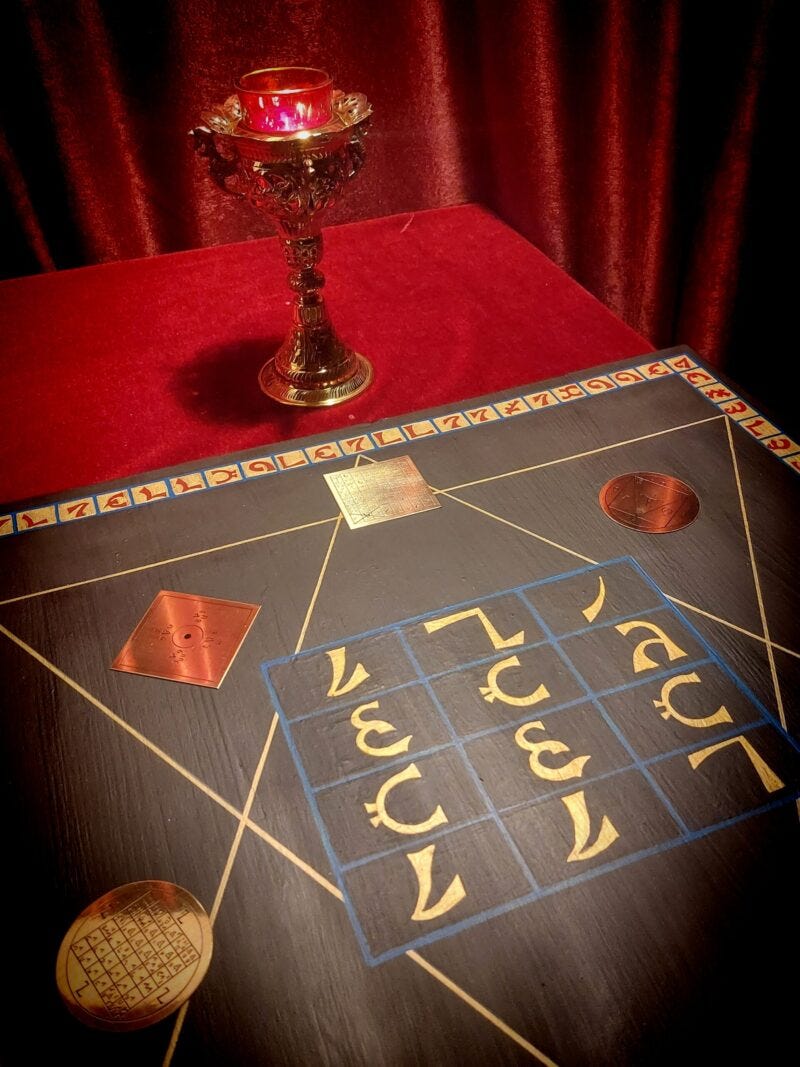
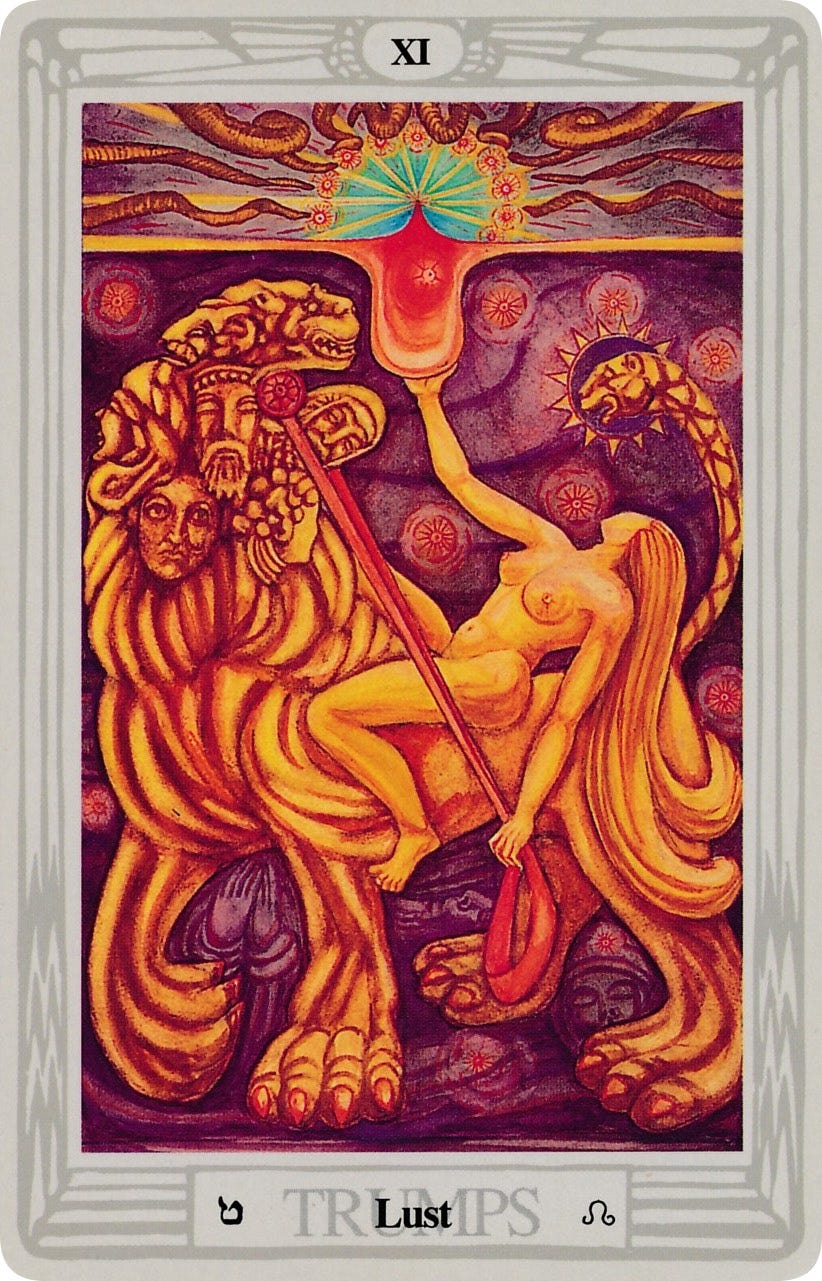

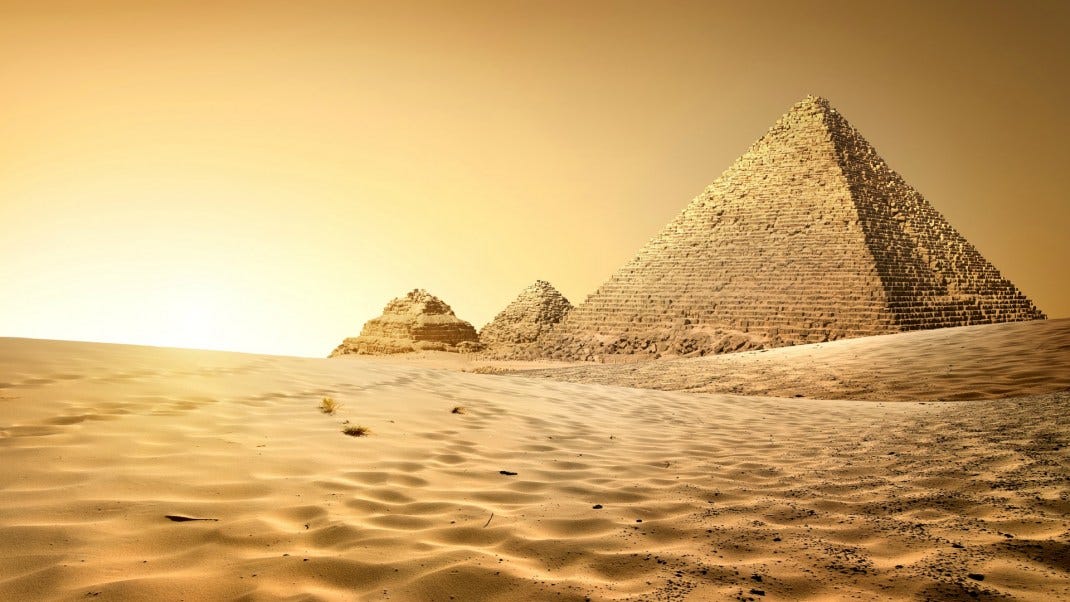
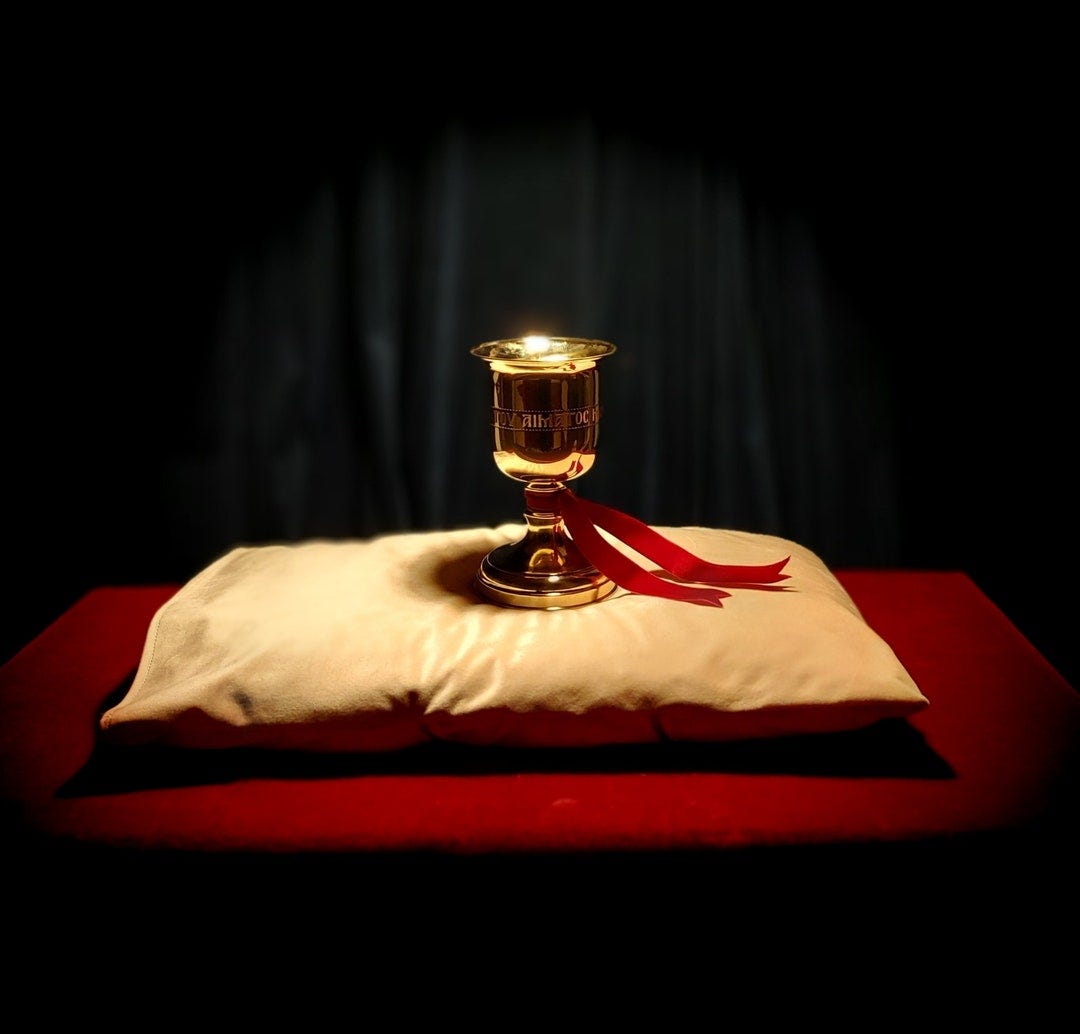

Thank you very much for this Marco. I have dusted off my copy of Gems from the Equinox accordingly.